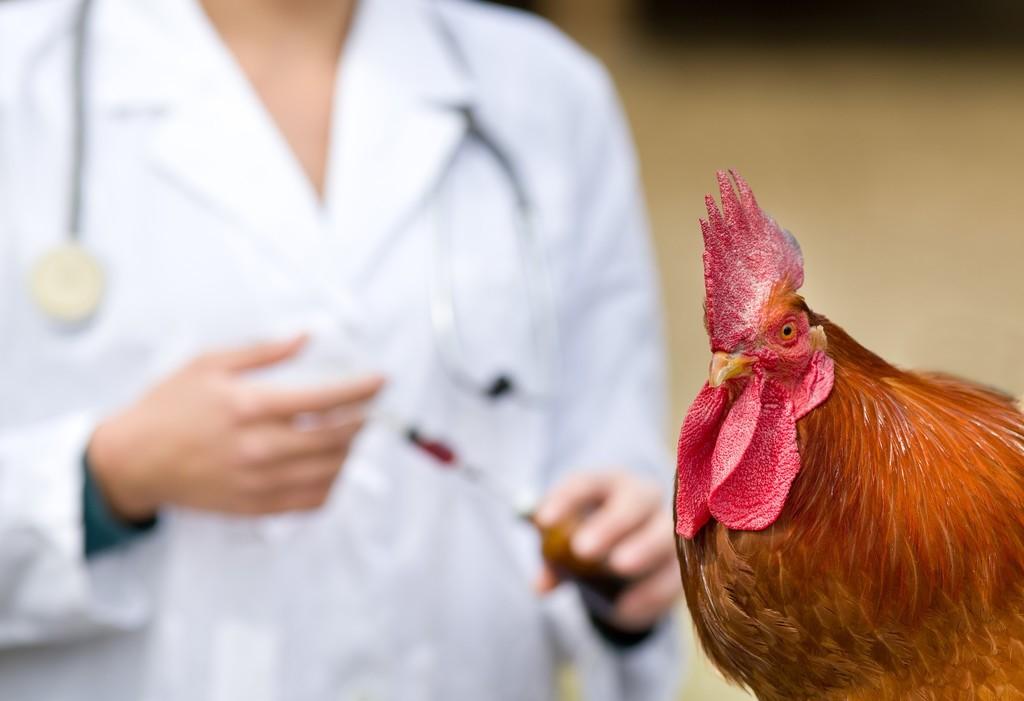Foreword: In the process of farmers breeding chickens in rural areas, there will often be a phenomenon of white crowns, in fact, this is what we call chicken living leukocytosis. Resident leukocytosis is an acute hemasporid protozoan disease caused by a variety of resident leukocytes of the genus Leukocytosis parasitize in the body of chickens, thereby destroying blood routines and internal organ tissue cells. The disease is the most serious harm to chicks, the symptoms of the disease are obvious and the incidence is high, often causing a large number of deaths; while the middle chickens and adult chickens often show symptoms of anemia after infection, and the damaged internal organs are extensively bleeding; because the crown and flesh of the chicken are obviously pale, it is called "white crown disease". Before the disease occurred in the southern breeding areas of China, it was more serious, mostly endemic, but in recent years, many areas in the north have also erupted in epidemics, and the harm to the chicken industry has become increasingly serious.

What should I do if a rural chicken is convicted of leukocyte worm disease? Nutritional problems do not back the pot? The truth of the onset of the disease turns out to be here
<h1 class= "pgc-h-arrow-right" >, how to distinguish the pathogens of live leukocytosis? </h1>
。 The first two species have long been found in China, while Wester's leukocytes parasitize the bodies of ducks and geese.
。 The parasitic host chicken cells are rounded, and the nucleus of the host chicken, which is squeezed into a flattened long rod, is located on the side of the worm body, and even the host nucleus disappears.
。 The parasitic host cells are spindle-shaped, about 67 microns in size × 6 microns in size, and the nuclei are dark, narrow bands that surround one side of the worm body, sometimes in a half-moon shape on both sides of the worm body. The occurrence of this disease requires the participation of vector insects, because the life history of Platoplasma carinii and Platoplasma Sassarinis needs to be completed with the help of blood cells, tissue cells and insects in chickens, respectively.
<h1 class= "pgc-h-arrow-right" > second, how is leukocyte disease prevalent? </h1>
Because midge and midge larvae must live in water, proximity to water sources or rainy seasons is responsible for the higher incidence of the disease. All breeds of chickens can be infected at all ages, and adult chickens are more susceptible to infection than chicks, but the incidence of adult chickens is lower than that of chicks. Although the infection rate is high in adult chickens aged 8 to 12 months or breeders over one year, the mortality rate is not high, but the incidence of roosters is significantly higher than that of hens.
<h1 class="pgc-h-arrow-right" >3. What are the clinical symptoms of live leukocyte worm disease? </h1>
。 Chicks aged 1 to 3 months have the highest incidence and therefore cause a large number of deaths; the symptoms of the disease in middle and adult chickens are often anemia, and the crown and flesh of the chicken are pale, so the name of the disease called "white crown disease" is also derived. Another symptom of sick chickens is the discharge of white or green watery thin feces, the development of the chicken is hindered, the egg production of adult chickens is reduced or stopped, and the number of soft shell eggs and shellless eggs is increased, and individual chickens will have paralysis symptoms in the later stages of the disease.
<h1 class= "pgc-h-arrow-right" >4. How does the pathology of live leukocytosis change? </h1>
: crown is characteristic white due to anemia or bleeding, blood in the mouth or blood clots in the mouth, systemic subcutaneous tissue bleeding, thin blood and yellowing of bone marrow, especially on the chest muscle, leg muscle and heart muscle, and small white nodules with grayish white or slightly yellow on each internal organ, needle tip to miliary size, and clear boundaries with surrounding tissues. These small nodules are picked out and made into tablets, and after staining, many fissocids will be seen. The follicles of the laying hens are deformed and bleeding, and the ruptured yolk, ascites and the reddish mixture of blood overflow into the abdominal cavity.
<h1 class="pgc-h-arrow-right" >5. What is the method for diagnosing and differentiating live leukoblastic disease? </h1>
The diagnosis of etiology is usually made by blood radiography, 1 drop of peripheral blood of the diseased bird is taken and coated into thin slices, and then stained with Ji's or Reed's liquid, and the protozoan body that occupies almost the white blood cells can be clearly seen under high magnification, or small gametosomes with red dots in the red blood cells.
<h1 class="pgc-h-arrow-right" >6. How to effectively prevent leukocytosis? </h1>
。 Prevention should mainly be in the breeding process to prevent poultry hosts and vector insect contact, in the midge, ants activity season, every 6 to 7 days can be used to use cypermethrin or cyanoether valerate and other insecticides to the farm of the internal and external environment of the thorough spraying insecticide, they are killed in the chicken coop and the surrounding breeding environment, which is of great significance to reduce the economic losses caused by the chicken farm after the occurrence of the disease.
< h1 class= "pgc-h-arrow-right" >7, what are the effective treatment drugs for live leukocyte worm disease? </h1>
The best way to control this is to take medical precautions in the course of culture when it is discovered that the disease is imminent before or is beginning to become endemic in the region. When chickens and poultry determine the occurrence of this disease, in order to achieve satisfactory prevention and control results, drugs must be taken in time for treatment.